Every so often Meta hosts an “Inside the Lab” roundtable where it showcases early technology it’s currently working on, usually on a very specific research field. Today’s was Inside the Lab: Passing the Visual Turing Test focusing on a very important part of a virtual reality (VR) headset’s hardware, the display. Trying to tackle a range of challenges, CEO Mark Zuckerberg, Chief Scientist of Reality Labs, Michael Abrash and several others unveiled three prototype headsets currently being developed.
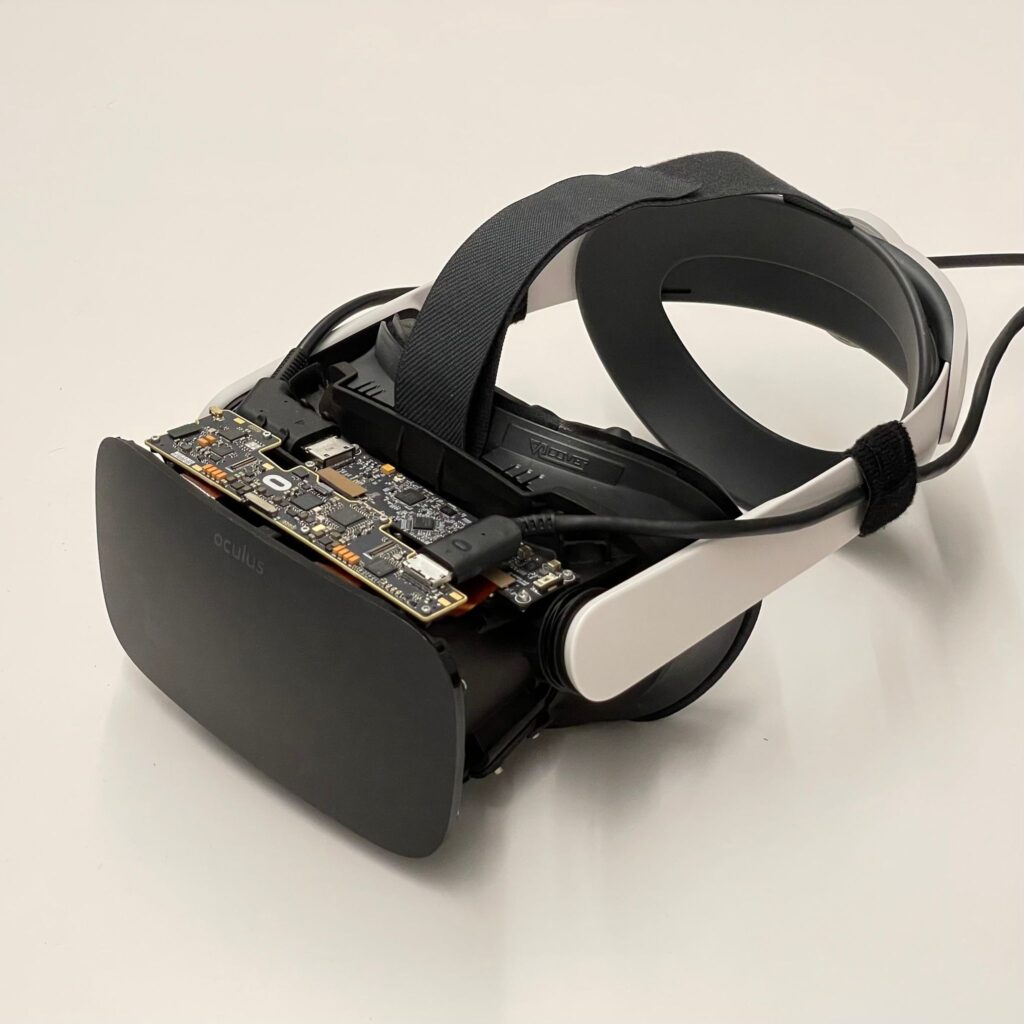
Prototyping quite often relies on trying to solve a singular problem, be that resolution, weight, size, durability, clarity or any number of other issues. Whilst the Meta Quest 2 does offer a good VR experience, it’s by no means perfect, with areas that can always be improved upon.
Butterscotch
Ensuring a user’s eye sees the best image possible is of utmost importance and Meta is trying to solve that in a number of ways. The first VR prototype shown was Butterscotch, looking like a heavily modded Oculus Rift.
This was built to address VR resolution, more specifically providing retinal resolution in VR. With 60 pixels per degree (ppd) being the benchmark – one which TVs and mobile phones have long surpassed – so that the headset can depict the 20/20 line on an eye chart. “This is the latest of our retinal resolution prototypes, and it gets us to near retinal resolution in VR — 55 pixels per degree. And that’s two and a half times the resolution of Quest 2,” says Abrash on Butterscotch.
While you might expect this to have been achieved via a new panel this wasn’t the case because: “there are currently no display panels that support anything close to retinal resolution for the full field of view of VR headsets today,” Abrash continues. “So what the Butterscotch team did was they shrank the field of view to about half that of a Quest 2 and developed a new hybrid lens that would fully resolve the higher resolution.”
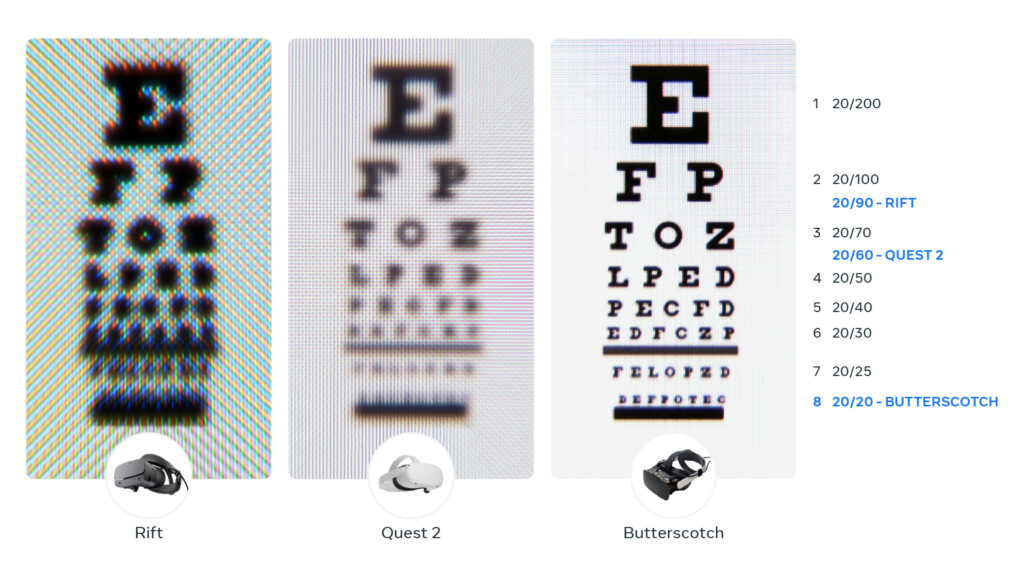
As you can see from the above images, Butterscotch does achieve excellent clarity but it’s still a bulky, far from a finished prototype.
Starburst
Even bigger and bulkier than Butterscotch is Starburst. With fans on the top and a pair of side handles, Starburst is Reality Labs’ prototype HDR VR headset. Yes, you read that right, this is what High Dynamic Range in a VR headset currently looks like.
HDR will be a crucial addition as it helps to increase that sense of realism and depth to an image. To do this VR headsets need lots of light to play with, with brightness referred to as nits. Meta’s peak brightness goal is 10,000 nits but as TVs have yet to achieve this number – Samsung’s 65Q9 range can hit 2,000 nits in HDR – that goal is still a way off. When it comes to current VR levels the Quest 2 maxes out at 100 nits.
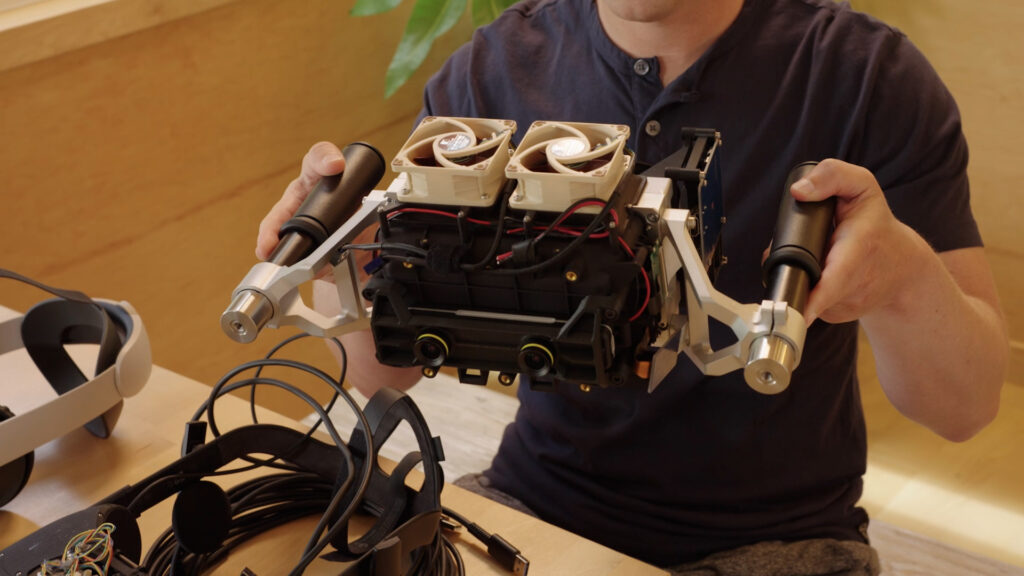
Packed into the Starburst prototype is a bright lamp behind the LCD panels. This helps Starburst reach an impressive 20,000 nits, creating what is likely one of the first 3D HDR VR displays. You probably wouldn’t want to use it for long though: “to be clear, [Starburst is] wildly impractical in this first generation for anything that you’d actually ship in a product. But we’re using it to test and for further studies so we can get a sense of what the experience feels like,” says Zuckerberg.
Holocake 2
As the last two headset prototypes look many years away how about something which looks slightly more production-ready. Described by Zuckerberg as: “the thinnest and lightest VR headset that we’ve ever built,” the Holocake 2 certainly looks the part of a futuristic device and it’s already capable of running PC VR games!
That might be impressive in a prototype headset but what’s even more remarkable is Holocake 2’s thin profile. VR headsets are thick because the displays and lenses need to be a certain distance apart so that your eyes can properly focus on the imagery. To achieve this slim design Meta has developed two new technologies; a flat holographic lens and polarized reflection.
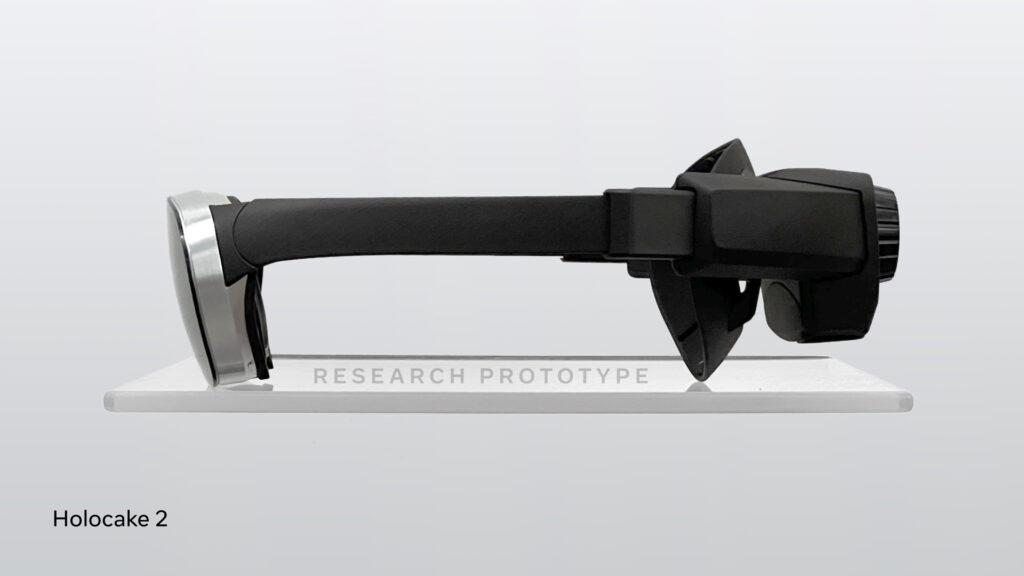
When it comes to the holographic lens Zuckerberg explains: “Holographs are basically recordings of what happens when light hits something. So just like a holograph is much flatter than the thing itself, holographic optics are much flatter than the lenses that they model, but they affect incoming light in pretty much the same way. So it’s a pretty neat hack.”
As for the polarized reflection, this method of optical folding reduces the space between the display panel and the lens. Both of these technologies have been combined with specialized lasers rather than LEDs as the light source. There’s only one problem, finding a laser with the performant size and price that you need for consumer VR headsets. “We’ll need to do a lot of engineering to achieve a consumer viable laser that meets our specs — that’s safe, low-cost, and efficient and that can fit in a slim VR headset,” Abrash notes. “As of today, the jury is still out on finding a suitable laser source.”
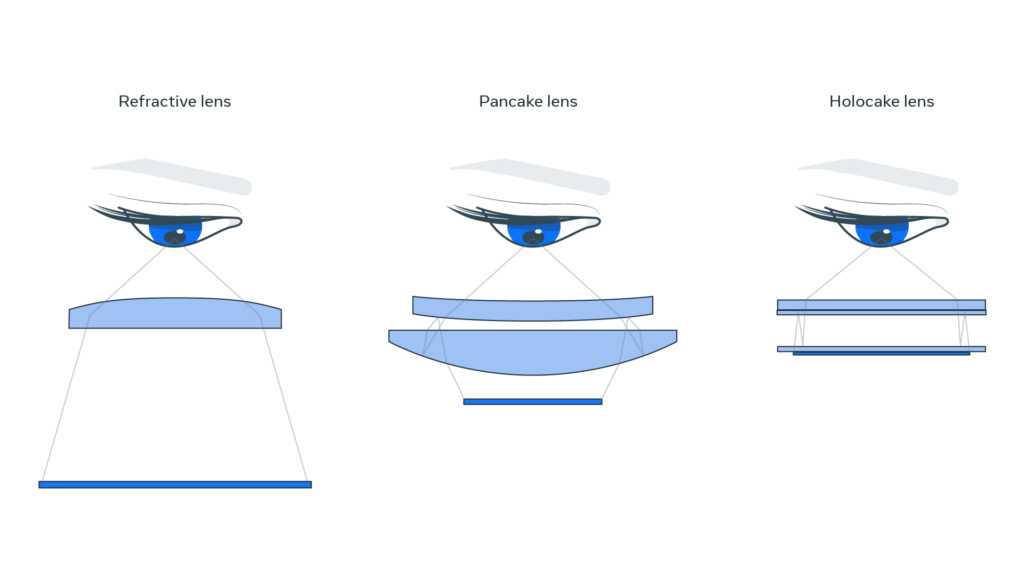
If any of these prototypes look familiar its because Butterscotch and Holocake were teased by Zuckerberg and CTO Andrew “Boz” Bosworth in 2021. No sign of the Meta Quest prototype previously mentioned.
Mirror Lake
Finally, there’s Mirror Lake. This isn’t even a prototype at this stage merely a research concept the Display Systems Research (DSR) team at Reality Labs rustled up. This is pie-in-the-sky thinking, coming up with a ski goggle-like form factor combining all the varifocal (Half-Dome) and eye-tracking and other tech Reality Labs has been working on.
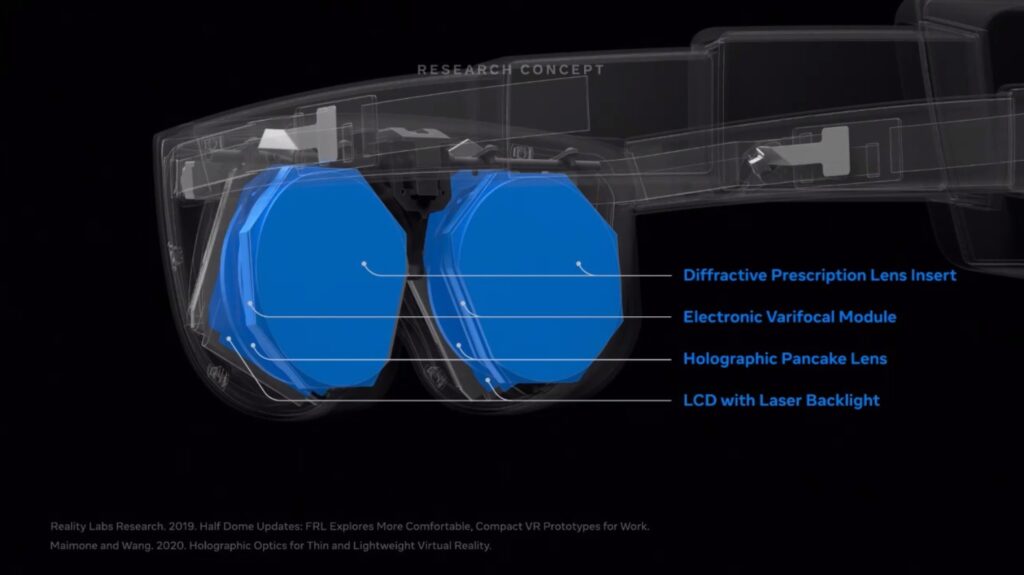
And there you have it, all the prototype VR headsets Meta has currently revealed and the challenges it’s trying to solve. While Holocake 2 might be on the near horizon the next headset from Meta is Project Cambria, expected to arrive later this year. For continued updates on the latest Meta VR devices, keep reading gmw3.
- 000
- 10
- 100
- 2021
- 3d
- a
- About
- Achieve
- achieved
- addition
- address
- affect
- All
- already
- always
- apart
- Basically
- because
- behind
- being
- Benchmark
- BEST
- between
- bigger
- Can Get
- capable
- case
- ceo
- certain
- challenges
- chief
- combined
- coming
- concept
- consumer
- continues
- Creating
- credit
- crucial
- CTO
- Current
- Currently
- described
- Design
- developed
- device
- Devices
- DID
- Display
- displays
- distance
- dynamic
- Early
- efficient
- Engineering
- excellent
- expect
- expected
- experience
- eye
- familiar
- fans
- finding
- First
- first 3D
- fit
- Focus
- focusing
- form
- from
- full
- further
- future
- futuristic
- generation
- goal
- good
- hack
- Hardware
- heavily
- helps
- High
- higher
- horizon
- How
- HTTPS
- Hybrid
- image
- images
- importance
- important
- impressive
- improved
- Increase
- issues
- IT
- itself
- Keep
- lab
- Labs
- lasers
- latest
- LCD
- levels
- light
- likely
- Line
- Long
- Look
- looking
- mark
- means
- mentioned
- Meta
- might
- mirror
- Mobile
- mobile phones
- model
- more
- Near
- next
- Notes
- number
- Oculus
- offer
- Other
- panel
- part
- Passing
- PC
- perfect
- phones
- Play
- possible
- pretty
- price
- Problem
- Product
- Profile
- project
- prototypes
- providing
- quest
- range
- RE
- reach
- Reading
- Reality
- reflection
- research
- Revealed
- rift
- running
- safe
- same
- Scientist
- sees
- sense
- several
- shown
- sign
- Size
- So
- SOLVE
- something
- Space
- specialized
- specific
- specifically
- Stage
- Still
- studies
- support
- surpassed
- Systems
- team
- tech
- Technologies
- Technology
- test
- The
- thing
- Thinking
- three
- times
- today
- top
- turing
- Updates
- us
- use
- usually
- View
- Virtual
- Virtual reality
- vr
- VR Experience
- ways
- What
- What is
- while
- Whilst
- working
- would
- year
- years
- Your
- youtube













